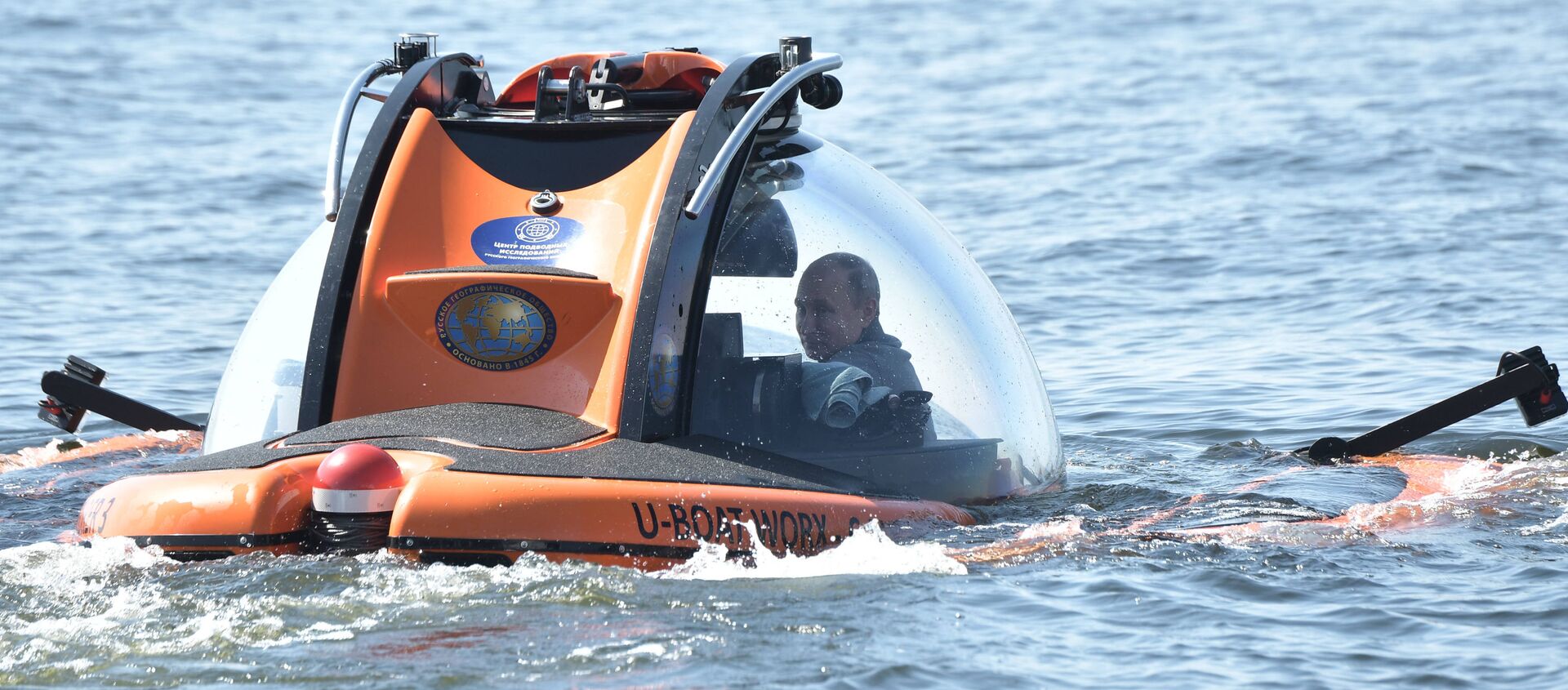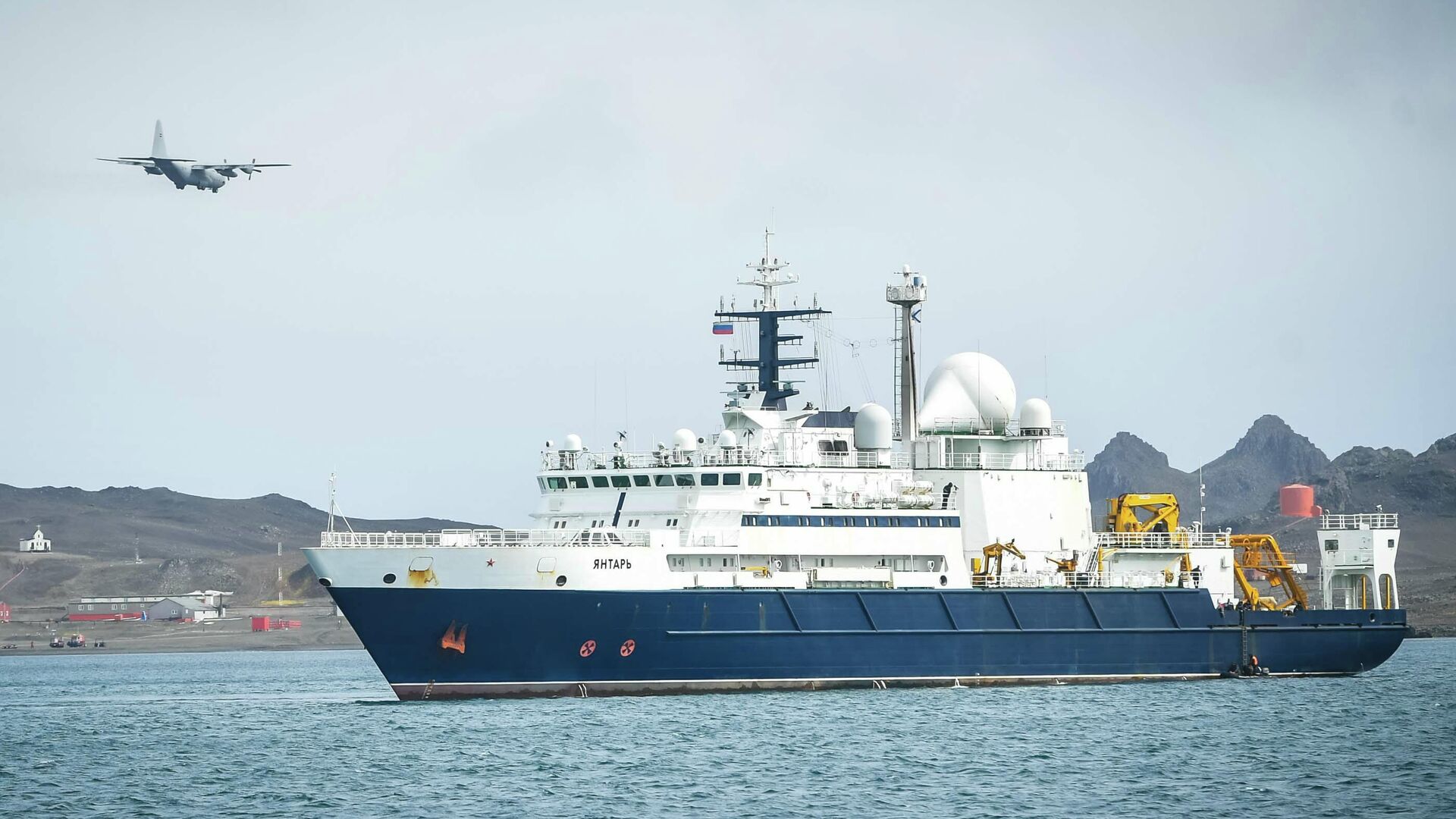https://sputnikglobe.com/20210914/tabloids-raise-row-over-russian-spy-ship-with-undersea-cable-cutting-capability-near-uk-waters-1089064786.html
Tabloids Raise Row Over Russian ‘Spy Ship’ With Undersea Cable-Cutting Capability Near UK Waters
Tabloids Raise Row Over Russian ‘Spy Ship’ With Undersea Cable-Cutting Capability Near UK Waters
Sputnik International
At least one British warship is thought to have been assigned to escort the Russian vessels as it crossed the Channel, which serves as a major transit artery... 14.09.2021, Sputnik International
2021-09-14T11:59+0000
2021-09-14T11:59+0000
2021-09-14T17:54+0000
russia
britain
tabloids
english channel
yantar
russian submarines
https://cdn1.img.sputnikglobe.com/img/07e5/09/0e/1089062043_0:26:2800:1601_1920x0_80_0_0_9001d50f30714ad8132f1be404d0f741.jpg
The British tabloid press is up in arms over the presence of a Russian “spy ship” in the English Channel, insinuating that the vessel, which acts as a mothership for deep-diving mini submarines, could engage in nefarious activities if not kept an eye on.The Yantar, a Russian research vessel attached to the Russian Northern Fleet and operated by the Navy’s Main Directorate of Underwater Research, was traveling east through the English Channel, passing the Strait of Dover before noon local time on Tuesday, Marine Traffic data shows.Russian officials said the ship is designed to measure and map the world’s oceans and determine their depth. For this purpose, the oceanographic vessel can be equipped with advanced manned and unmanned deep-sea underwater vehicles capable of diving to depths of more than 6,000 metres.The ship can also be used for search and rescue operations involving sunken submarines, or underwater repair work, and has a helipad for one onboard helicopter. The vessel was deployed to South America in 2017 to help search for Argentina’s lost Navy submarine. Before that, in 2016, the Yantar assisted a Syrian telecoms company with emergency repairs to a strategically important cable providing internet to Syria, Libya and Lebanon. Similar repair work may have been done in late 2016 off the coast of Iran, according to media reports.The Daily Mail, meanwhile, says that in addition to the HMS Mersey, British shore-based sensor equipment and submarines may have tracked the Yantar during its transit, while pointing to a 2017 Russian media report suggesting the ship could “cut internet cables and jam underwater sensors”. A Ministry of Defence spokesman told the newspaper that the Royal Navy was “monitoring the presence of a Russian ship through the English Channel” as part of a “routine response to transiting warships from other nations”.Tuesday’s transit isn’t the first time the Yantar has come up in the news. In August, The Times reported that Britain’s military had launched an investigation to determine whether the ship’s activities “close to a cable that carries internet traffic between Europe and America” off Ireland’s coast were nefarious in nature. The inquiry has yet to report back.Stories about alleged Russian plans to cut the UK off from the internet appear regularly in the UK press, but never explain what motivation Moscow might have for engaging in such hostile activity, which would constitute an act of war. In 2019, Britain’s Department for International Trade’s Export Control Joint Unit announced restrictions banning the sale of British-made submersible vehicles and technologies to Russia, citing Moscow’s alleged efforts to develop capabilities to “track, assess and disrupt undersea communication cables".
https://sputnikglobe.com/20190815/uk-bans-transfer-of-sub-tech-to-russia-in-bid-to-stop-moscow-from-destroying-the-internet-1076559413.html
russia
britain
english channel
Sputnik International
feedback@sputniknews.com
+74956456601
MIA „Rossiya Segodnya“
2021
News
en_EN
Sputnik International
feedback@sputniknews.com
+74956456601
MIA „Rossiya Segodnya“
Sputnik International
feedback@sputniknews.com
+74956456601
MIA „Rossiya Segodnya“
russia, britain, tabloids, english channel, yantar, russian submarines
russia, britain, tabloids, english channel, yantar, russian submarines
Tabloids Raise Row Over Russian ‘Spy Ship’ With Undersea Cable-Cutting Capability Near UK Waters
11:59 GMT 14.09.2021 (Updated: 17:54 GMT 14.09.2021) At least one British warship is thought to have been assigned to escort the Russian vessels as it crossed the Channel, which serves as a major transit artery for the nations of northern and eastern Europe.
The British tabloid press is up in arms over the presence of a Russian “spy ship” in the English Channel, insinuating that the vessel, which acts as a mothership for deep-diving mini submarines, could engage in nefarious activities if not kept an eye on.
The Yantar, a Russian research vessel attached to the Russian Northern Fleet and operated by the Navy’s Main Directorate of Underwater Research, was traveling east through the English Channel, passing the Strait of Dover before noon local time on Tuesday, Marine Traffic data shows.
Russian officials said the ship is designed to measure and map the world’s oceans and determine their depth. For this purpose, the oceanographic vessel can be equipped with advanced manned and unmanned deep-sea underwater vehicles capable of diving to depths of more than 6,000 metres.
The ship can also be used for search and rescue operations involving sunken submarines, or underwater repair work, and has a helipad for one onboard helicopter. The vessel was deployed to South America in 2017 to help search for Argentina’s lost Navy submarine. Before that, in 2016, the Yantar assisted a Syrian telecoms company with emergency repairs to a strategically important cable providing internet to Syria, Libya and Lebanon. Similar repair work may have been done in late 2016 off the coast of Iran, according to media reports.
However, British tabloids fear the Yantar (lit. ‘Amber’) may have a different purpose. The Mirror calls the ship an “intelligence vessel”, and reports that the Royal Navy deployed the HMS Mersey patrol vessel to escort it away from British territorial waters (which the ship never entered). “The Yantar is referred to as a ‘Special Purpose Ship’ and an ‘Oceanographic vessel’ but it is generally considered to be involved in international espionage,” the newspaper dramatically suggests.
The Daily Mail, meanwhile,
says that in addition to the HMS Mersey, British shore-based sensor equipment and submarines may have tracked the Yantar during its transit, while pointing to a 2017 Russian media
report suggesting the ship could “cut internet cables and jam underwater sensors”. A Ministry of Defence spokesman told the newspaper that the Royal Navy was “monitoring the presence of a Russian ship through the English Channel” as part of a “routine response to transiting warships from other nations”.
Across the pond, US tabloid the New York Post ramped up the rhetoric, calling the Russian research ship
“Vladimir Putin’s Yantar” and falsely claiming that it was “caught loitering” in the channel. The Post went on to warn that “Putin’s fleet of submarines dedicated to tampering with vital undersea internet cables could cripple Britain and plunge the country into chaos,” and suggested that the Yantar is operated by a “shadowy branch of the Russian military that answers directly to Putin – with a mission to deliver a catastrophic blow to the West.”
Tuesday’s transit isn’t the first time the Yantar has come up in the news. In August, The Times
reported that Britain’s military had launched an investigation to determine whether the ship’s activities “close to a cable that carries internet traffic between Europe and America” off Ireland’s coast were nefarious in nature. The inquiry has yet to report back.
Stories about alleged Russian plans to cut the UK off from the internet
appear regularly in the UK press, but never explain what motivation Moscow might have for engaging in such hostile activity, which would constitute
an act of war. In 2019, Britain’s Department for International Trade’s Export Control Joint Unit announced restrictions banning the sale of British-made submersible vehicles and technologies to Russia,
citing Moscow’s alleged efforts to develop capabilities to “track, assess and disrupt undersea communication cables".

15 August 2019, 17:40 GMT




